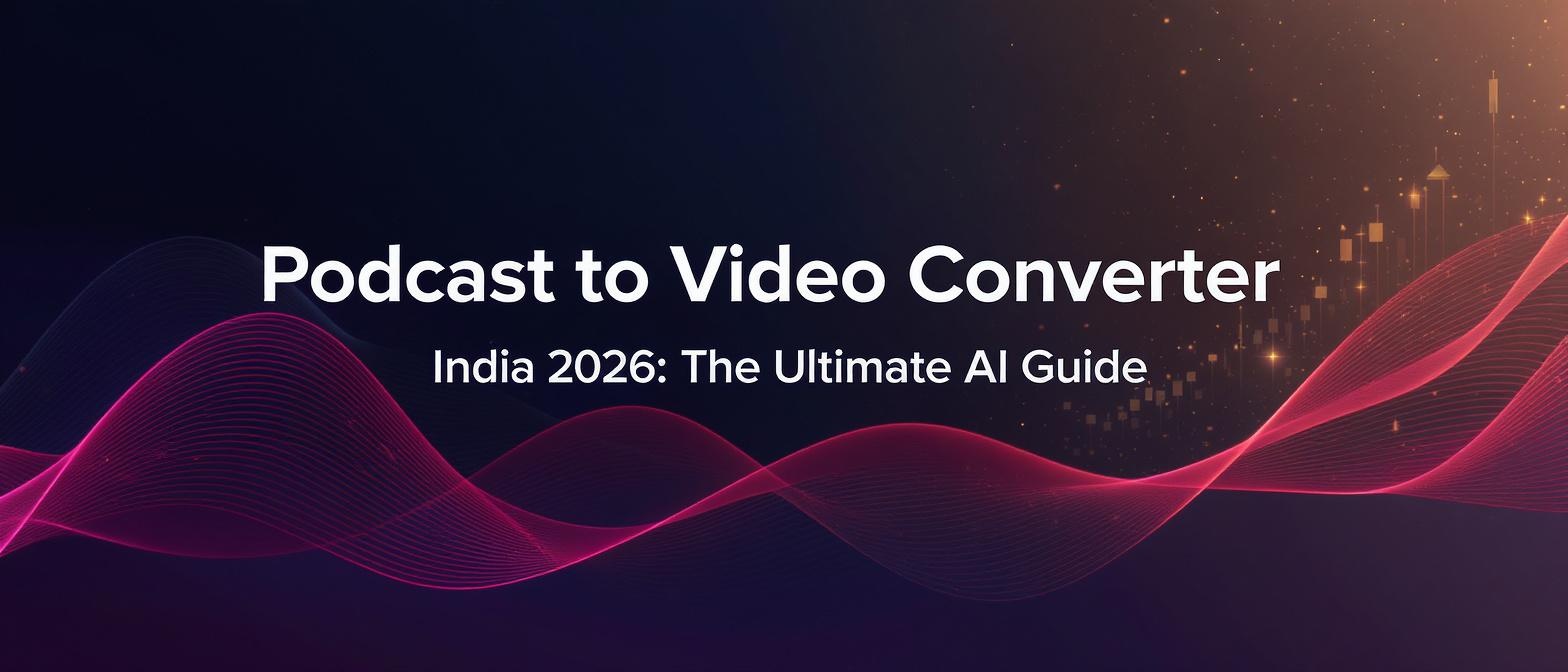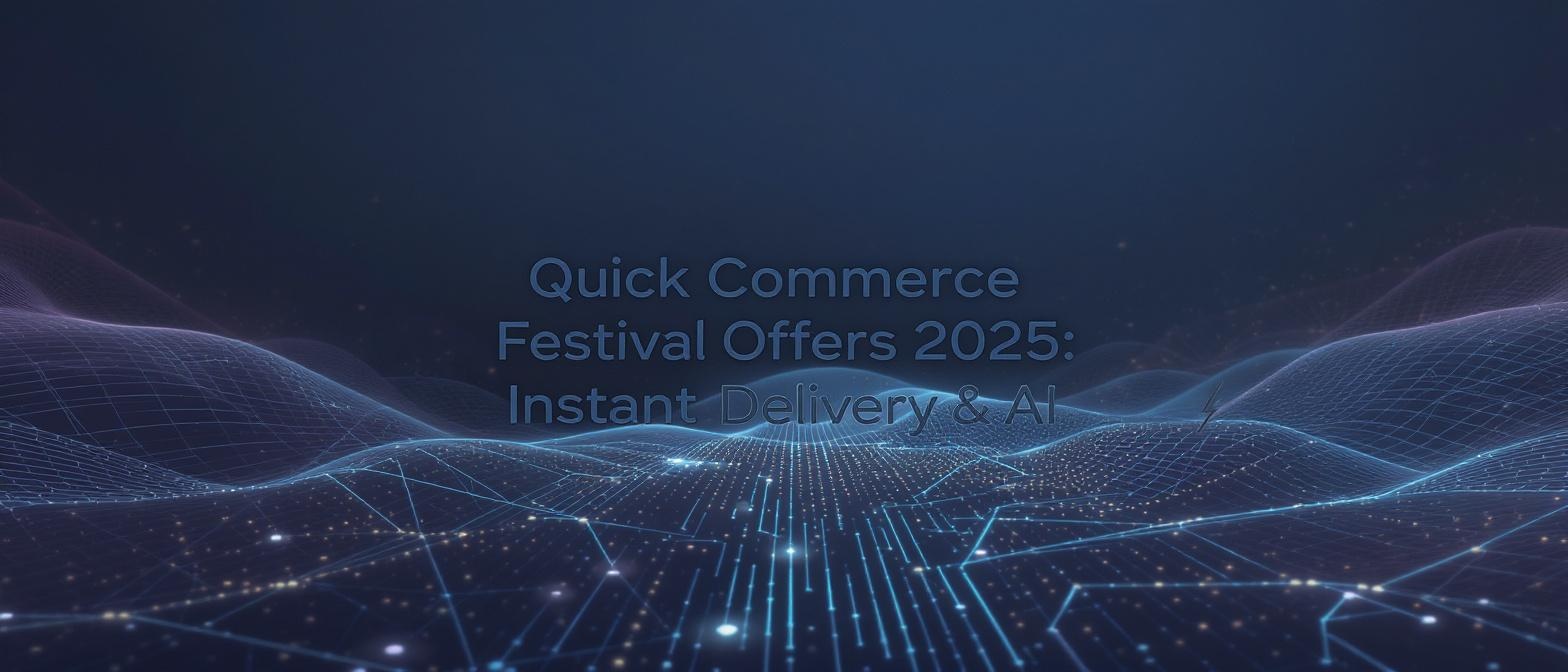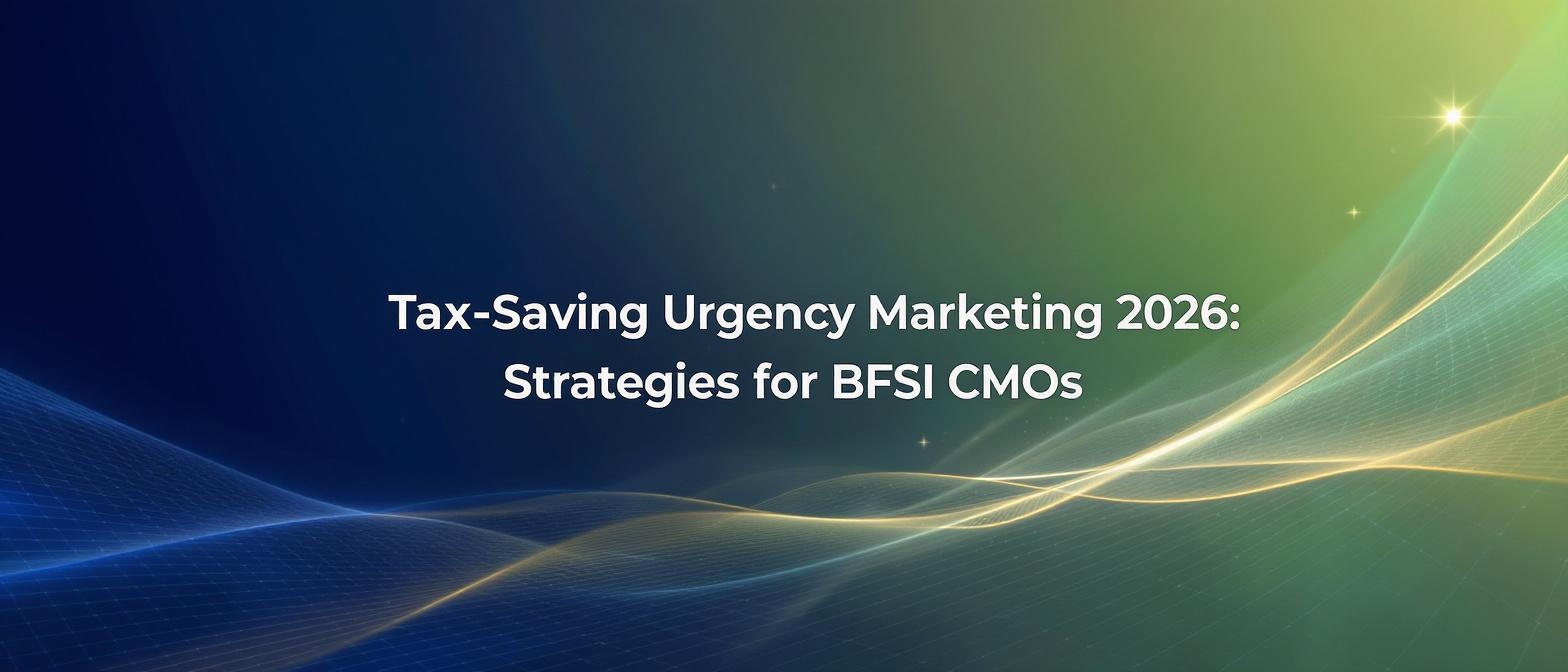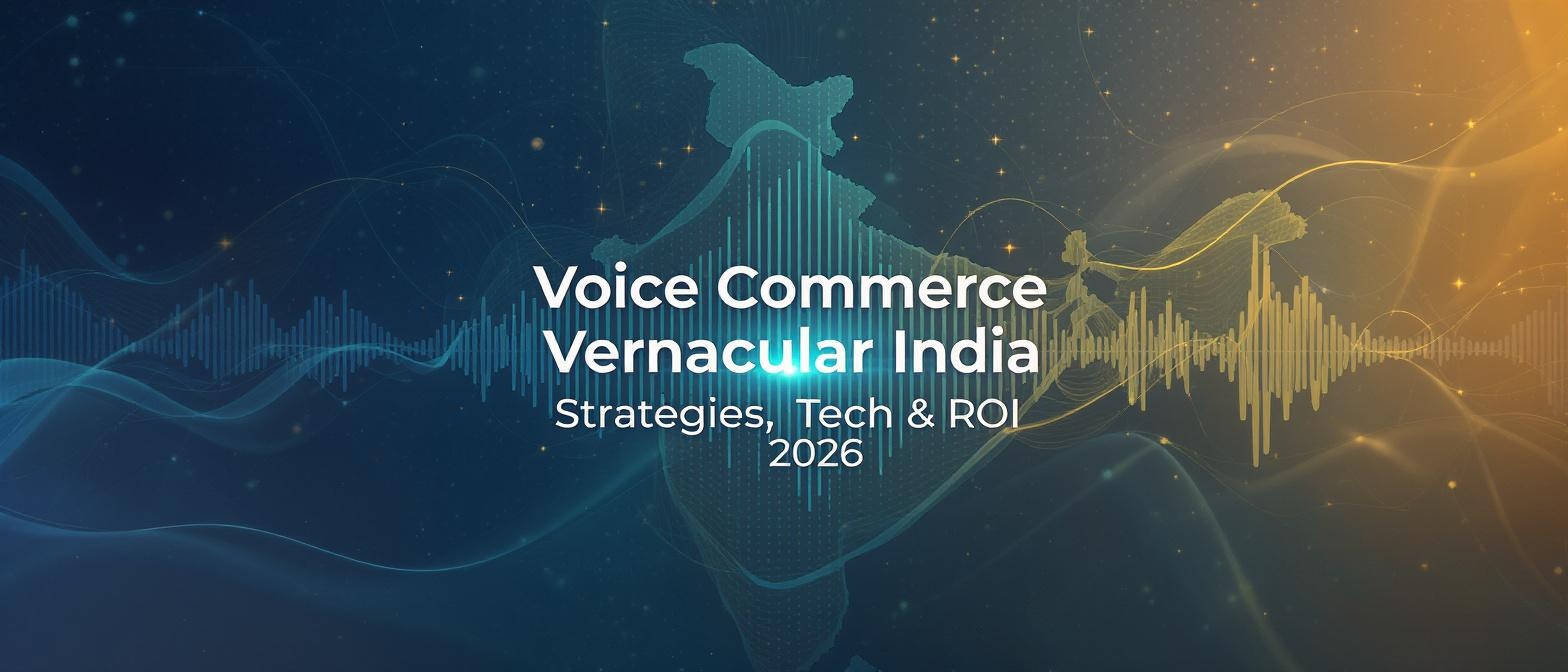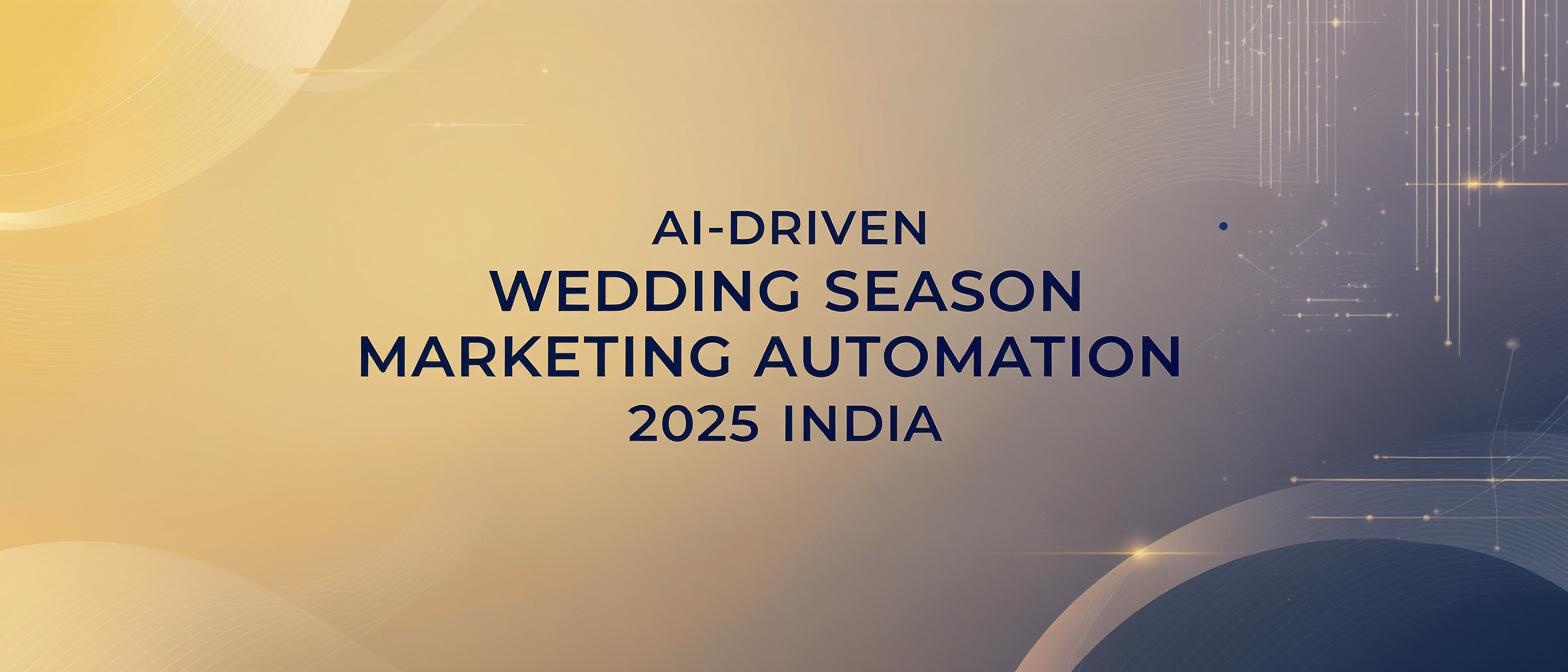Podcast to Video Converter India 2026: The Ultimate AI-Powered Guide
Estimated reading time: ~18 minutes
Key Takeaways
- AI-driven podcast-to-video conversion in India is on the rise, enabling waveforms, subtitles, and avatars.
- Repurposing audio content maximizes reach across YouTube, Instagram, and more.
- Multiple cost-effective platforms like Adori.ai, EchoWave, and Studio by TrueFan AI offer extensive AI features.
- A robust distribution strategy with short-form video clips promotes engagement and monetization.
In the bustling digital landscape of India, a new frontier is rapidly emerging for content creators. The term podcast to video converter India 2026 is no longer a niche keyword but a strategic imperative for anyone looking to amplify their voice. These are not just simple file converters; they are sophisticated, AI-driven platforms designed to transform standard MP3 or WAV audio files into dynamic, shareable videos complete with engaging waveform animations, synchronized subtitles, and even AI-powered avatars. As India's podcast market continues its explosive growth, with projections showing it will reach nearly 120 million listeners by 2025, the pivot to video has become essential. This guide is your roadmap to navigating this exciting transformation, leveraging the power of an AI podcast video creator to capture a larger, more engaged audience.
The synergy between India's booming podcast listenership and the insatiable appetite for short-form video content on platforms like YouTube Shorts, Instagram Reels, and LinkedIn has created a perfect storm of opportunity. Artificial intelligence is the key that unlocks this potential, offering unparalleled speed, automation, and multi-language support that was once the exclusive domain of large production houses. Whether you're a seasoned podcaster or just starting, understanding how to use an audio to video converter in India will be a cornerstone of your content strategy in the coming years. This guide will walk you through the why, the how, and the what of this revolution, ensuring your content doesn't just get heard—it gets seen.
Section 1: Why Convert Podcasts to Video? The Data-Driven Case for a Visual Strategy
In a world saturated with content, simply being heard is no longer enough. The strategic conversion of podcasts into video format is a powerful growth lever, and the data for the Indian market is compelling. Here’s why making the switch from audio-only to a multi-sensory experience is a non-negotiable for creators aiming for market leadership.
Supercharge Your Audience Engagement
The human brain is hardwired to process visual information more effectively than audio alone. This neurological preference translates directly into higher engagement metrics. For the Indian audience, the preference is even more pronounced. Recent data indicates that video formats can increase audience engagement by over 30% compared to their audio-only counterparts. Furthermore, a 2025 analysis by Firework revealed that video-centric platforms like YouTube see 34% higher engagement than traditional blog posts, underscoring the power of visual media to capture and retain audience attention. By adding visual elements like dynamic waveforms, host headshots, or relevant b-roll, you transform passive listeners into active, engaged viewers.
Unlock Multi-Platform Reach and Discoverability
Your podcast might have a loyal following on audio platforms, but a vast, untapped audience awaits on visual-first channels. YouTube, the world's second-largest search engine, is a discovery powerhouse. A robust podcast YouTube strategy for 2025 is essential for discoverability, allowing new audiences to find your content through video searches. Similarly, platforms like Instagram Reels, LinkedIn, and even WhatsApp Channels are fertile ground for short, impactful podcast clips for YouTube and other social media. Repurposing your audio into platform-native video formats allows you to meet your audience where they are, dramatically expanding your reach beyond the confines of traditional podcasting apps.
Enhance Accessibility and SEO
Converting your podcast to video intrinsically boosts its accessibility. AI-powered converters automatically generate accurate transcriptions and subtitles, making your content accessible to the hearing-impaired community and those who prefer to watch videos without sound (a common behavior on mobile devices). This text-based component is also a massive boon for Search Engine Optimization (SEO). Search engine crawlers can index the transcribed text, making your episodes searchable for specific keywords and topics discussed, thereby increasing your organic visibility and attracting a highly relevant audience.
The Compelling Economics of AI-Powered Conversion
Traditionally, video production has been a time-consuming and expensive endeavor. However, the advent of AI has democratized the process. Modern AI tools can slash the manual editing time required to repurpose podcast content video by up to 70%. What once took hours of meticulous work—syncing audio, creating animations, and adding captions—can now be accomplished in minutes. This dramatic increase in efficiency not only saves valuable time but also delivers a significant return on investment, allowing creators to produce more content at a fraction of the cost and effort. According to a Wyzowl survey from 2025, an overwhelming 93% of marketers report that video gives them a positive ROI, a testament to its effectiveness as a marketing and content distribution tool.
Section 2: Top AI Tools for Podcast Video Creation in India
The market for AI-powered podcast-to-video converters is expanding rapidly, with a host of innovative platforms offering unique features tailored to the needs of Indian creators. These tools are designed to be intuitive, fast, and cost-effective, removing the technical barriers to video production. Here’s a look at some of the leading podcast video editor tools for 2026.
Leading Platforms for Indian Creators
- Scenith: As an Indian SaaS platform, Scenith is finely tuned to the local market. It boasts features like AI-powered voiceovers, a wide array of dynamic waveform animations, and automated subtitles. Its key selling point is speed, with the ability to convert a full podcast episode into a professional-looking video in under 10 minutes. It also offers brand templates to ensure content consistency.
- EchoWave: EchoWave is celebrated for its user-friendly, drag-and-drop interface. It allows creators to easily upload audio, add visual assets like logos and background images, and generate captivating waveform animations. Its export presets are optimized for various social platforms, including YouTube, Instagram, and LinkedIn, making it a versatile choice for multi-platform distribution.
- Adori.ai: Adori.ai excels in auto-captioning and media synchronization. It allows users to seamlessly integrate images, intro/outro clips, and other visual elements that appear at specific timestamps in the audio. Its focus on custom branding and template-driven creation makes it a strong contender for creators who prioritize a polished, professional aesthetic.
- ChopCast, Mootion, Vokal, and Recast Studio: This group of tools offers a range of specialized features. ChopCast is excellent for identifying and clipping the most shareable moments from long-form content. Mootion provides advanced customization options for visual elements. Vokal and Recast Studio are known for their efficiency in batch processing and creating various types of repurposed content, from audiograms to full-length videos.
Platforms like Studio by TrueFan AI enable creators to take this a step further, offering not just conversion but also the creation of video content from scripts using photorealistic AI avatars, perfect for creating unique intros, outros, or promotional clips for your podcast videos.
Comparison of Key Features
| Feature | Scenith | EchoWave | Adori.ai | ChopCast | Studio by TrueFan AI |
|---|---|---|---|---|---|
| Core Functionality | Fast MP3/WAV to video conversion | Drag-and-drop video creation | Synchronized media assets | AI-powered clip discovery | Script-to-video with AI avatars |
| Waveform Styles | Dynamic, multiple styles | Customizable animations | Standard and custom options | Included in video clips | N/A (Avatar-focused) |
| Auto-Subtitles | Yes | Yes | Yes | Yes | Yes (175+ languages) |
| Branding | Custom templates, logos | Logos, background images | Custom branding kits | Yes | Custom backgrounds |
| Output Formats | 720p, 1080p | 720p, 1080p, 4K | 1080p | 1080p | 720p, 1080p, 4K |
| Pricing Tier | Free starter plan | Subscription-based | Subscription-based | Subscription-based | Tiered (Free to Enterprise) |
| Unique Feature | Sub-10 minute conversion | Platform-specific export presets | Timestamp-based media sync | AI-driven highlight detection | Photorealistic AI avatars |
Technical Specifications to Consider
- Input File Formats: Ensure the tool supports your preferred audio formats, typically MP3 and WAV.
- Output Resolutions: Look for options ranging from 720p for quick social clips to 1080p and even 4K for high-quality YouTube uploads.
- Maximum Duration: Check the limits on the length of audio you can upload, especially for longer podcast episodes.
- Brand Asset Uploads: The ability to upload your own logos, fonts, and color palettes is crucial for maintaining brand consistency.
Section 3: The Step-by-Step Workflow for AI-Powered Conversion
Transforming your audio podcast into a compelling video is a straightforward process with modern AI tools. This streamlined workflow empowers creators to produce high-quality video content efficiently, regardless of their technical expertise. Here is a typical step-by-step guide to create podcast videos AI style.
Step 1: Record and Prepare Your Audio
The foundation of a great podcast video is high-quality audio. Record your episode using your preferred software and hardware, such as Audacity, Adobe Audition, or a dedicated podcasting microphone. Once recorded, clean up the audio by removing any background noise, long pauses, or mistakes. Export the final version as a high-quality MP3 or WAV file.
Step 2: Upload to Your Chosen AI Tool and Select a Template
Log in to your chosen audio to video converter India platform (like Scenith or EchoWave) and upload your final audio file. The first creative step is to choose a template. Most platforms offer a variety of pre-designed templates that dictate the overall look and feel of your video, including the waveform style, background, and placement of your logo and other elements.
Step 3: Auto-Transcription and Subtitle Generation
Once your audio is uploaded, the AI gets to work. It will automatically transcribe the entire episode, generating time-coded subtitles. Review the transcription for any potential errors, as AI is not always perfect, especially with regional accents or specialized terminology. Most tools allow you to easily edit the text and timing. You can often export the subtitles as a separate SRT file, which is useful for uploading to platforms like YouTube.
Step 4: Customize Branding and Visuals
This is where you infuse your brand's personality into the video. Upload your podcast's logo and apply your brand's color scheme to the template. You can typically choose a static background image, a simple color, or even a looping video. Consistency in branding across all your video content is key to building brand recognition.
Step 5: Fine-Tune Your Waveform Animation
The waveform is the signature visual element of a podcast video. Customize its appearance to match your brand. You can choose from various styles—such as a static line, pulsating bars, a circle, or even 3D animations. Adjust the colors to align with your brand palette. A visually appealing waveform can make your video significantly more engaging.
Step 6: Render and Export in the Correct Aspect Ratio
Before you render the final video, select the appropriate aspect ratio for the platform where you plan to publish it. The standard aspect ratios are:
- 16:9 (Horizontal): Ideal for YouTube.
- 9:16 (Vertical): Perfect for Instagram Reels, YouTube Shorts, and TikTok.
- 1:1 (Square): Best for Instagram grid posts and some LinkedIn feeds.
Once you've selected the aspect ratio, click the "Render" or "Export" button. The platform's cloud servers will process your video, and you'll receive a notification when it's ready to download.
Step 7: Publish, Schedule, and Promote
With your video file in hand, it's time to share it with the world. Upload the full-length version to YouTube, making sure to optimize the title, description, and tags with relevant keywords. For social media, use a tool like ChopCast or manually create shorter clips (60-90 seconds) of the most interesting parts of your episode to share on LinkedIn, Twitter, and Instagram.
Pro-Engagement Tips:
- Start with a Hook: The first 5 seconds are crucial. Begin your video clips with a compelling question, a surprising statement, or a captivating visual to grab the viewer's attention.
- Use Nameplates and CTAs: Add text overlays to introduce guests or highlight key topics. Include clear calls-to-action (CTAs) encouraging viewers to subscribe, comment, or visit your website.
- Embed Clickable Timestamps: For longer videos on YouTube, add timestamps in the description to create chapters. This improves the viewer experience and can boost your video's SEO.
Section 4: A Winning YouTube & Social Media Strategy for 2025
Creating the video is only half the battle; a strategic approach to distribution is what will ultimately drive growth. A well-executed podcast YouTube strategy 2025 is crucial for tapping into the platform's massive audience. Here’s how to optimize your video podcast content for maximum impact on YouTube and other social media channels.
Embrace the Power of Short-Form "Vodcast" Clips
While your full-length episodes have a place on YouTube, short "vodcast" clips (60-120 seconds) are the currency of modern social media. These snippets are perfect for YouTube Shorts, Instagram Reels, and TikTok. Identify the most compelling, controversial, or valuable moments from your podcast and turn them into standalone micro-content. Ensure these clips feature dynamic waveforms and bold, easy-to-read captions to capture attention in a fast-scrolling feed. According to a 2025 report from Sprout Social, short-form video delivers the highest ROI of any marketing trend, making it an essential part of your strategy.
Design High-Impact Thumbnails
On YouTube, the thumbnail is your content's billboard. It's often the single most important factor in a viewer's decision to click. Your thumbnails should be:
- High-Contrast: Use bright, bold colors and text that stand out.
- Consistent: Maintain a consistent branding style (fonts, colors, logo placement) across all your thumbnails to build brand recognition.
- Intriguing: Use visuals and text that create curiosity. Including a person's face, especially with an expressive emotion, can significantly increase the click-through rate (CTR).
Optimize Your Posting Cadence and Timing
Consistency is key to building an audience. Aim to post 2-3 new video clips or a full episode each week. Pay close attention to your analytics to determine when your audience is most active. For the Indian market, peak viewing hours are typically between 6 PM and 9 PM IST. Scheduling your posts to go live during these times can give your content an initial velocity boost.
Master SEO for Video
Treat your YouTube uploads with the same SEO rigor as a blog post.
- Title: Include your primary keyword at the beginning of the title.
- Description: Write a detailed description (at least 200 words) that naturally incorporates your primary keyword and 3-4 related secondary keywords. Include links to your website, social media, and audio podcast.
- Tags and Hashtags: Use a mix of broad and specific tags that are relevant to your episode's topic. Include 2-3 relevant hashtags in your description (e.g., #podcastclips, #AIwaveform, #IndianPodcast).
Leverage Collaborations and Cross-Promotions
Tap into the existing audiences of other creators in the Indian podcasting and influencer ecosystem. Collaborate with other podcasters on a joint episode, or invite an influencer onto your show as a guest. When you promote the video content from these collaborations, be sure to tag each other to encourage cross-pollination of your audiences.
Track, Analyze, and Optimize
Your YouTube and social media analytics are a goldmine of information. Pay close attention to these key metrics:
- Watch Time and Average View Duration: These are the most important ranking factors on YouTube. They tell you how engaging your content is.
- Click-Through Rate (CTR): This measures the effectiveness of your titles and thumbnails.
- Audience Retention: This graph shows you exactly when viewers are dropping off, helping you identify parts of your content that may be less engaging.
Use this data to continuously refine your strategy. A/B test different thumbnail styles, experiment with various clip lengths, and double down on the topics and formats that resonate most with your audience.
Section 5: Repurposing & Monetizing Your Podcast Video Content
The true power of converting your podcast to video lies in the myriad ways you can repurpose podcast content video to create a content ecosystem. Each audio episode is a raw asset that can be sliced, diced, and repackaged to fuel your marketing efforts across multiple channels, opening up new avenues for monetization.
Create a Content Waterfall
Think of your full-length episode as the top of a waterfall. From this single piece of content, you can create a cascade of smaller assets:
- Full-Length Video Podcasts: This is your anchor content for YouTube. Enhance it by adding more than just a waveform. Include live-action b-roll, headshots of the hosts and guests, and animated transitions to create a more dynamic viewing experience.
- Audiograms and Highlight Reels: These are short (30-60 second) clips that feature a key insight or a powerful quote from your episode, overlaid with a dynamic waveform and captions. They are perfect for driving engagement on Instagram Stories, LinkedIn feeds, and Facebook.
- Snippet Reels and Quote Graphics: Extract the most memorable quotes and turn them into visually appealing text-based video clips or static graphics. These are highly shareable on platforms like Twitter/X and can be used to tease the full episode.
This strategy allows you to maximize the value of every minute of audio you record, ensuring a consistent and varied stream of content for your audience.
Unlock New Monetization Avenues
Video content opens up a world of monetization opportunities that are not available with audio-only podcasts.
- YouTube AdSense: Once your channel meets the eligibility requirements (currently 1,000 subscribers and 4,000 watch hours), you can monetize your videos through the YouTube Partner Program, earning revenue from ads played on your content.
- Sponsored Overlays and Segments: Brands are willing to pay a premium for visual placements. You can sell sponsored segments where a brand's logo is featured as an overlay on the screen, or create dedicated pre-roll or mid-roll video ads.
- Affiliate Marketing: Video provides a more effective medium for affiliate marketing. You can visually demonstrate a product or service and include clickable affiliate links directly in your YouTube description or a pinned comment.
The ROI of Multilingual Expansion
One of the most powerful and often overlooked benefits of AI-driven video creation is the ability to scale your content across language barriers. India's linguistic diversity represents a massive opportunity. Studio by TrueFan AI's 175+ language support and AI avatars allow you to take a single podcast episode and, with a few clicks, generate versions with auto-translated subtitles or even full voiceovers in multiple regional languages like Hindi, Tamil, Bengali, or Telugu. This localization strategy can exponentially increase your addressable market within India, connecting you with audiences that were previously unreachable. The time and cost savings are immense; what would have required a team of translators and voice actors can now be largely automated, delivering a powerful ROI.
Section 6: Challenges & AI-Driven Solutions in India
While the opportunity to convert podcasts to video is immense, creators in India often face a unique set of challenges. Fortunately, the very AI technology driving this trend also offers elegant solutions to these common hurdles, making high-quality video production more accessible than ever.
Challenge 1: The Visual Asset Gap
Many podcasters are audio experts, not graphic designers. Sourcing high-quality, relevant background images, b-roll footage, and other visual assets can be a significant challenge.
AI-Driven Solution: Most modern podcast video editor tools come equipped with integrated stock media libraries. These platforms offer vast, searchable galleries of royalty-free images, videos, and graphics, allowing creators to easily find and incorporate professional-looking visuals without leaving the editor. Template galleries also provide pre-designed, aesthetically pleasing layouts, solving the design problem with a single click.
Challenge 2: Technical Skill Barriers
The prospect of learning complex video editing software like Adobe Premiere Pro or Final Cut Pro is daunting for many. The steep learning curve can be a major deterrent.
AI-Driven Solution: The core design philosophy of these new tools is user-friendliness. They feature intuitive, drag-and-drop interfaces that are as easy to use as creating a presentation in Canva. AI handles the heavy lifting of transcription, animation, and synchronization, while AI-guided tutorials and onboarding processes help even the most novice users get up to speed quickly.
Challenge 3: Budget Constraints
Professional video production can be expensive. For independent creators and small businesses, the cost of software, assets, and time can be prohibitive.
AI-Driven Solution: The SaaS (Software as a Service) model of these platforms makes them highly affordable. Many, like Scenith, offer free starter plans that allow creators to test the platform and create a limited number of videos at no cost. Paid plans are typically available as low-cost monthly subscriptions or pay-as-you-go models, providing professional-grade tools without a large upfront investment.
Challenge 4: Maintaining Quality and Compliance
Ensuring consistent video quality and adhering to platform-specific content guidelines can be a concern, especially when producing content at scale.
AI-Driven Solution: AI platforms automate quality control by providing standardized export settings optimized for each social media channel. Furthermore, enterprise-grade solutions like Studio by TrueFan AI demonstrate ROI through built-in content moderation filters. These systems can automatically scan scripts and generated content for profanity, hate speech, or other policy violations, ensuring 100% compliance and protecting the creator's brand.
Challenge 5: Platform Compatibility
Creating and exporting videos in the correct format, resolution, and aspect ratio for every different platform (YouTube, Instagram, LinkedIn, etc.) is a tedious and time-consuming task.
AI-Driven Solution: This is a key area where podcast video automation India shines. AI converters offer auto-export presets that automatically format the video to the optimal specifications for your chosen destination. With a single click, you can generate multiple versions of your video, each perfectly tailored for YouTube, Instagram Reels, or a LinkedIn post, saving hours of manual re-formatting.
Section 7: Enterprise-Grade Power: A Deep Dive into Studio by TrueFan AI
For creators, agencies, and media houses looking to move beyond simple conversion and embrace video creation at scale, enterprise-level platforms offer a suite of powerful, next-generation tools. At the forefront of this evolution is Studio by TrueFan AI, a browser-based platform best described as "Canva for AI videos." It's an AI podcast video creator that not only converts but also generates original video content, providing a comprehensive solution for a sophisticated content strategy.
Key Features That Redefine Video Production
Studio by TrueFan AI is built on a foundation of cutting-edge generative AI technology, offering features that solve some of the biggest challenges in video production:
- Extensive Avatar Library: The platform features a library of pre-licensed, photorealistic virtual presenters. These are not CGI characters but digital twins of real actors and models, such as Gunika, Annie, and Aryan. This allows podcasters to have a virtual host for intros, outros, or promotional segments without the need for a physical camera, studio, or actor.
- Seamless Script-to-Video Generation: This is a game-changer for repurposing content. You can paste snippets from your podcast script (or any other text) into the platform, and the AI will generate a video of your chosen avatar speaking the lines with perfectly natural intonation and flawless lip-syncing. This is ideal for creating short, impactful social media clips from your episode's key moments.
- Intuitive In-browser Editor: The platform includes a user-friendly editor that allows you to trim your generated video, add and customize subtitles, switch between aspect ratios (16:9, 9:16, 1:1) with a single click, and overlay your own branding and background imagery.
- Unmatched Multilingual Localization: With support for over 175 languages, Studio by TrueFan AI is a localization powerhouse. You can auto-generate voiceovers and subtitles in a vast array of languages, making it incredibly easy to adapt your content for India's diverse regional markets and for a global audience.
- Cost-Effective Virtual Reshoots: Traditionally, if you needed to update a video—to correct a mistake, update information, or change a call-to-action—you would have to re-record the entire segment. With Studio by TrueFan AI, you simply edit the script and re-render the video. This "virtual reshoot" capability saves enormous amounts of time and money.
- Robust API and Integration: For large-scale operations, the platform's Webhooks and APIs allow for the complete automation of the video generation process, integrating seamlessly into existing podcast production and marketing automation workflows.
Proven Enterprise Success
Studio by TrueFan AI has already demonstrated its value in the market, with major media houses using the platform for personalized vodcast campaigns. With render times as short as 30 seconds and a 100% compliance record thanks to its built-in content moderation, it provides the speed, safety, and scale that serious content operations require. As an AI podcast video editor and generator, it represents the future of podcast video automation India.
Conclusion: The Future of Podcasting in India is Visual
The digital media landscape in India is at a pivotal moment. The convergence of a thriving podcasting ecosystem and the dominance of video content is not a passing trend but a fundamental shift in how audiences consume information and entertainment. As we look towards 2026, it's clear that AI-powered platforms have democratized video production, empowering every Indian creator to compete on a level playing field. The journey from a simple audio file to a dynamic, multi-platform video experience is no longer a complex, resource-intensive ordeal.
The benefits are undeniable: supercharged audience engagement, a vastly expanded reach across platforms like YouTube and Instagram, and significant savings in time and cost. By leveraging the tools and strategies outlined in this guide, you can transform your podcast from a one-dimensional audio experience into a vibrant, multi-faceted content engine.
The time to act is now. We encourage you to start experimenting. Explore the free tiers offered by platforms like Scenith and Adori.ai to get a feel for the workflow. For those with ambitions to scale their content production, a deeper look into the enterprise-grade capabilities of Studio by TrueFan AI is a logical next step. Embrace the power of a podcast to video converter India 2026 and unlock the full potential of your voice. Your future audience is waiting to not just hear you, but to see you.
Frequently Asked Questions
1. What is the best format for a podcast video?
The best format depends on the platform. For YouTube, the standard 16:9 horizontal format is ideal for full-length episodes. For creating short, shareable clips for platforms like Instagram Reels, YouTube Shorts, and TikTok, the 9:16 vertical format is the most effective as it fills the entire mobile screen and is native to those platforms.
2. How long should a podcast video clip be for social media?
For maximum engagement on social media, aim for clips between 60 and 120 seconds. This is long enough to provide a valuable insight or a compelling story but short enough to retain the attention of users who are quickly scrolling through their feeds. The first 3-5 seconds are critical, so start with a strong hook.
3. Can I use a podcast to video converter for free?
Yes, many podcast-to-video converter platforms offer free starter plans. These plans are a great way to test the software and its features. They typically come with limitations, such as a cap on the number of videos you can create per month, a watermark on the final output, or limited access to premium templates and features.
4. How can I make my podcast videos more engaging beyond a simple waveform?
To increase engagement, consider adding more dynamic visual elements. You can include headshots of the host and guests, relevant b-roll footage that illustrates what you're discussing, animated text overlays to highlight key points, and progress bars to show viewers how much of the video is left. Platforms like Studio by TrueFan AI even allow you to create custom intros and outros using photorealistic AI avatars, adding a highly professional touch to your content.
5. How can I track the success of my podcast videos?
Track the success of your videos by monitoring the analytics on the platforms where you post them. On YouTube, pay close attention to metrics like Watch Time, Average View Duration, Click-Through Rate (CTR), and Audience Retention. On social media platforms like Instagram and LinkedIn, track views, shares, comments, and saves. This data will provide valuable insights into what type of content resonates most with your audience, allowing you to refine your strategy over time.

